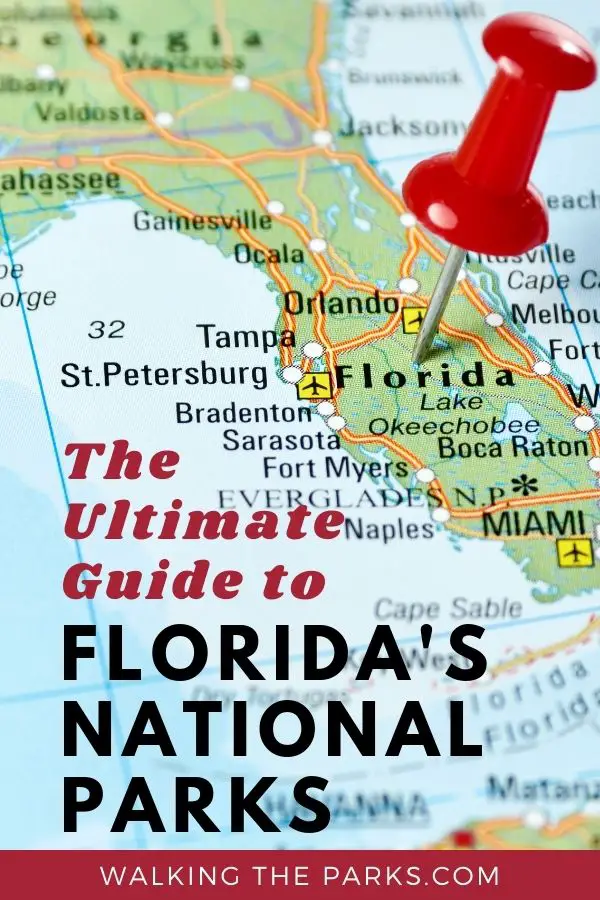Florida is home to some of the most beautiful and diverse national parks in the country. From the crystal-clear waters of Biscayne National Park to the unique swamps of Big Cypress National Preserve, there’s something for every nature lover to explore. Here is a list of 11 of the best Florida National Parks with a guide for each park to help you plan your adventure.
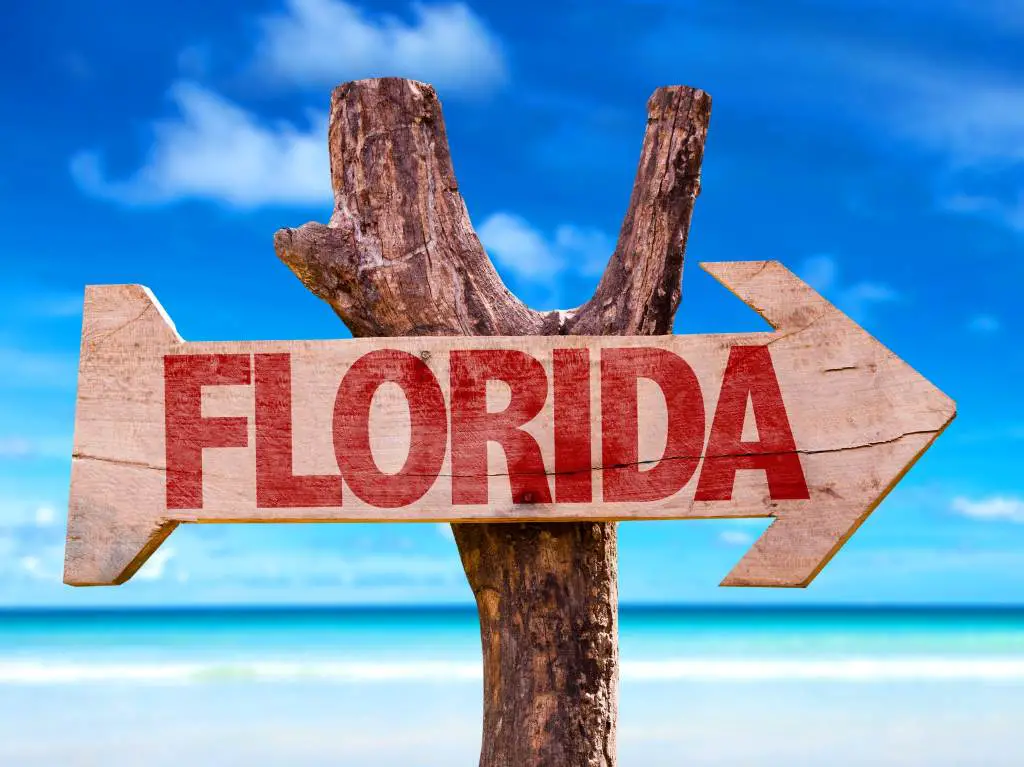
This post contains affiliate links to make it easier for you to find the products I have mentioned. You don’t pay any extra and in some cases I could earn a small commission.
What Will You Find in the National Parks of Florida?
The National Park Sites in Florida have so much to offer. Packed into the 11 National Parks you will discover:
- 7 forts to explore, ranging from those built by Spanish and French explorers to ones from the Civil War Era.
- 2 amazing places to snorkel the Florida Coastal Reef and see fish beyond your imagination up close and personal.
- 8 parks where kayaking or canoeing might just be the best way to explore the park and seashores.
- 5 National Parks where the beaches are stunning and waiting for you to relax for a day of sun and swimming.
- 6 shorelines where fishing is often just as popular as exploring the park.
- A park where you can watch rockets soar into space and another where you can see the Blue Angels practice their aerial displays.
- And every single park provides unbelievable bird-watching opportunities.
What’s the Difference Between a National Park and a National Park Site?
Wondering what’s the difference between a traditional National Park and all these other National Park Sites? The primary difference between a National Park and a National Park Site is the scope of the resources being protected.
A National Park is usually larger and encompasses a variety of natural resources we want to protect. Currently, there are 63 National Parks in the United States. There are also over a dozen other designations for National Parks, covering almost 500 locations. These additional National Park Sites are also managed by the National Park Service and usually protect a very specific natural resource or piece of history.
The 11 National Parks in Florida include 3 traditional National Parks. Then it includes 8 more sites that are managed by the National Park Service.
List of all 11 Florida National Park Sites
National Parks:
1. Biscayne National Park
2. Dry Tortugas National Park
3. Everglades National Park
National Park Sites:
4. Big Cypress National Preserve
5. Canaveral National Seashore
6. Castillo de San Marcos National Monument
7. De Soto National Memorial
8. Fort Caroline National Memorial
9. Fort Matanzas National Monument
10. Gulf Islands National Seashore
11. Timucuan Ecological and Historical Preserve
Map of Florida National Parks
Here’s a map of where the Florida National Parks are located. Just zoom in to see each individual Park.
Florida National Park Road Trip Itinerary Ideas
As you can see on the map, it’s pretty easy to create a couple of amazing Florida National Park road trips by combining parks. Here are a couple of suggested itineraries:
✨ Florida Keys Road Trip: Biscayne National Park, Big Cypress National Preserve, Everglades National Park, and Dry Tortugas National Park
✨ Atlantic Coast National Park Road Trip (perfect side trip from Orlando to Jacksonville Florida): Canaveral National Seashore, Fort Matanzas National Monument, Castillo de San Marcos National Monument, Fort Caroline National Memorial, and Timucuan Ecological and Historical Preserve
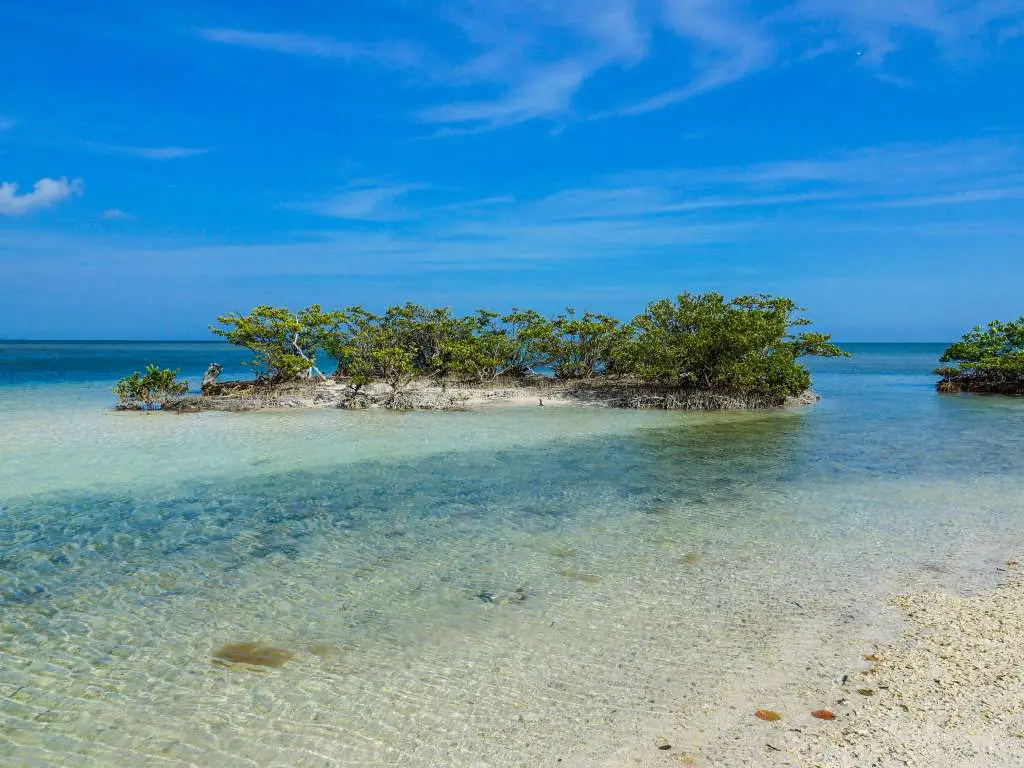
Biscayne National Park
Location: South of Miami, near Homestead Florida
Fees and Reservations: No entrance fee. Fees and reservations are required for activities (see below)
Step into a hidden paradise in the turquoise waters of Biscayne National Park, one of the 3 traditional National Parks in Florida. 95% of this park is underwater! The park is the northernmost portion of the third-largest coral reef in the world which makes it one of the most amazing places to explore.
Located just south of Miami, this expansive preserve is where you can explore shipwrecks, mangrove shores, and a gorgeous coral reef. Biscayne is filled with awe-inspiring beauty and offers an abundance of outdoor water activities for adventurers.
During our trip to Biscayne National Park, I discovered the joy of snorkeling the Florida coral reef! Don’t miss this gorgeous underwater park.
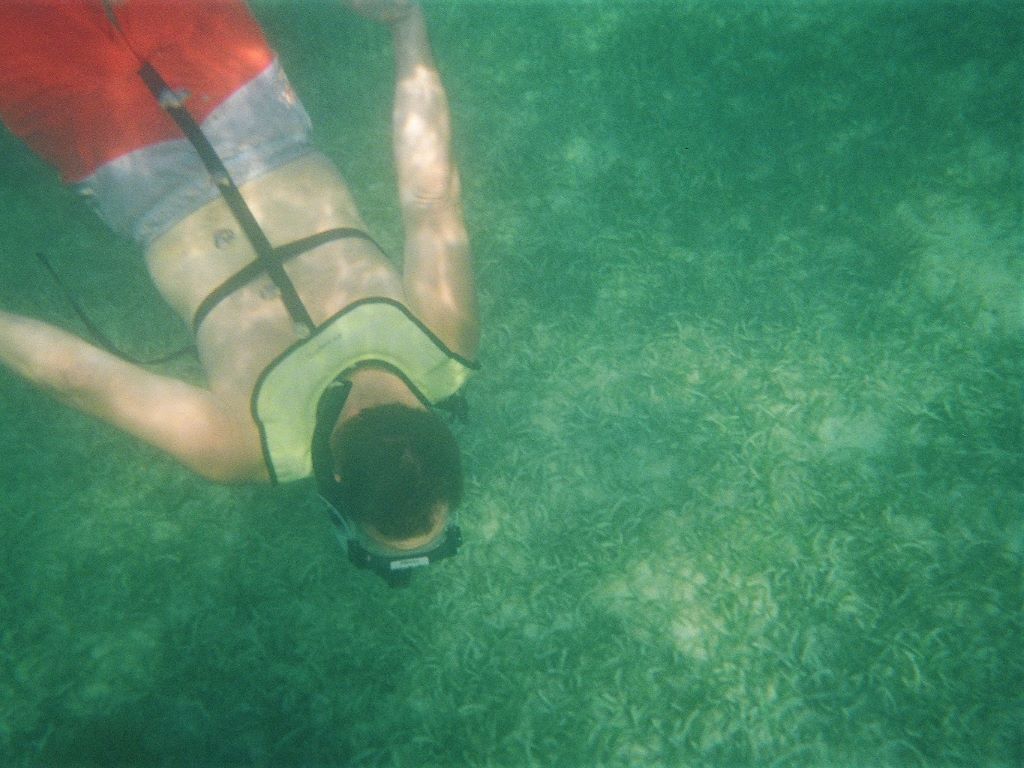
Things to Know about Biscayne National Park
This Florida National Park contains four distinct ecosystems – the bay, coral reef, keys, and mangrove wetlands. The marine ecology stands out above the others. Manatees, dolphins, sea turtles, and over 600 species of fish make their home here. Visitors to the park can take guided tours of these habitats or explore on their own. Enjoy a day of swimming, snorkeling, scuba diving, and kayaking.
Biscayne National Monument, established in 1968, was almost a resort to be called the City of Islandia. The plan was to build hotels and highways through the northernmost keys of Florida with massive development. Proponents of creating a National Park to preserve the wildlife and ecosystems campaigned and eventually won what was an intense battle. Since then, the park has expanded several times and was designated a National Park in 1980.
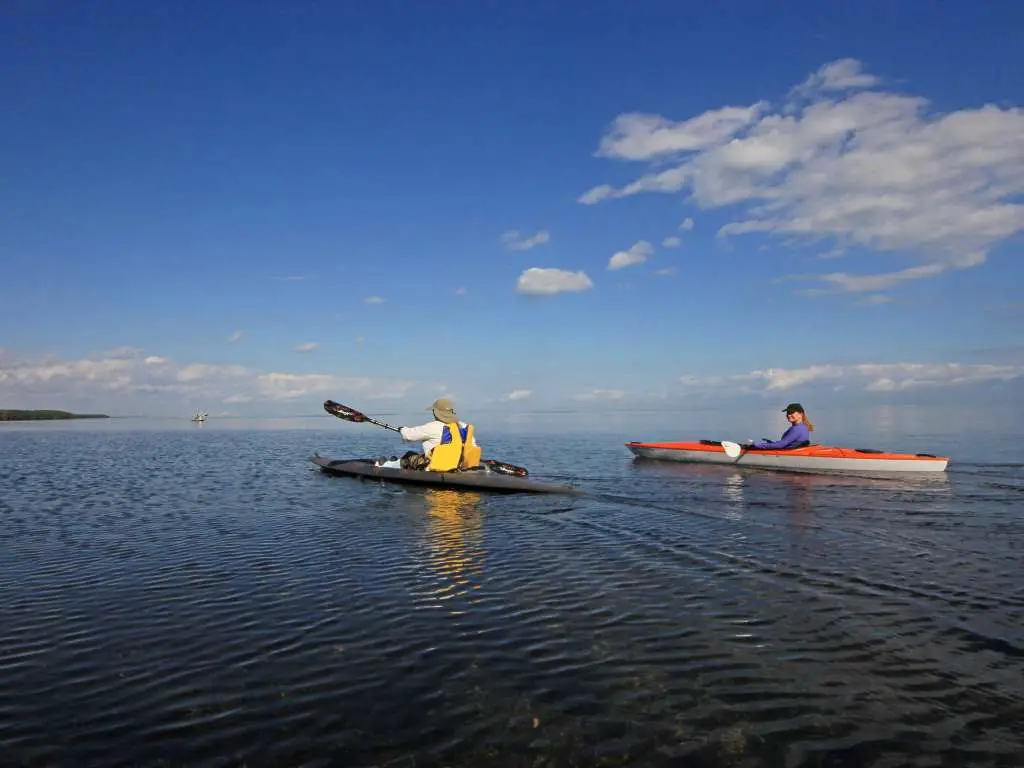
Top 10 Things to Do in Biscayne National Park
- Snorkeling among the coral reefs, shipwrecks, and mangrove trees is the top visitor favorite in Biscayne National Park. Without a doubt snorkeling the coral reef was my favorite stop in the Florida National Parks! Most snorkeling is done through guided tours which we recommend you book in advance.
- Kayak along the mangrove shores to see a wide variety of exotic fish. The roots of the mangrove offer protection from larger predictors so many fish species use them as their nurseries. The crystal clear water provides an amazing window. You can launch your own canoe or kayak from the visitor center ramp or join one of the many tours.
- Scuba Diving into the deeper shipwrecks and explore hard to reach depths of Biscayne National Park. You can join the Scuba Eco-Adventure offered by the Biscayne National Park Institute or explore from your own boat. To scuba in Biscayne, you must have a valid scuba certification.
- Biscayne Bay is well known for its fishing adventures. You can fish from your own private boat or kayak within the bay. You’ll also find people fishing from shore along the Jetty Walk. It’s important to check maps to ensure you are not fishing in one of the protected areas or near a coral reef. There are several private fishing tours on the bay from the shores of Miami if you want to go for the big fish. https://www.viator.com/tours/Miami/Miami-Inshore-Fishing-Charter/d662-38075P4
- Discover beautiful migratory and neo-tropical birds on one of Biscayne’s birding trails. From mangrove cuckoos to yellow-crowned night herons, there are plenty of birds to see in the park. While many can be observed from the shoreline with binoculars, many visitors prefer to explore the shore for birds in kayaks.
- Enjoy a relaxing day, sailing Biscayne Bay. Most sail tours also include time to snorkel and explore sandy beaches. You’ll find tours leaving the visitor center by the Biscayne National Park Institute or you can join a private sailing tour out of Miami that will cruise the bay and Biscayne National Park. https://www.viator.com/tours/Miami/Sailing-Miami-Bay/d662-363978P1
- Take a self-guided walking tour on Convoy Point Jetty Walk. This 0.8-mile educational walk has ten stops with detailed signage explaining various facets of the park. You’ll find some of the best shore views of Biscayne Bay along this trail.
- Visit the Dante Fascell Visitor Center, gallery and museum for interactive displays to help you learn about Biscayne National Parks ecosystems and wildlife.
- Boating in Biscayne National Park is accessed through nearby marinas if you have your own boat. And several relaxing boat tours are offered through the Institute. By boat, you can visit Boca Chita Key, a historic 1930s lighthouse or Elliot Key, the largest island in the park.
- Catch the Sunrise over Biscayne. You’ll not only get an amazing photo, you’ll start the day with a smile.
To make reservations for any Biscayne National Park tours, reach out to Biscayne National Park Institute. They are a non-profit organization that manages tours for the park.
Tips for Visiting
- Pack a picnic. There are no restaurants in the park.
- Prepare for a sunny day with a hat and reef-friendly sunscreen.
- Make your tour reservations in advance, even if it’s just on your phone on the way into the park (although in advance is better!). Otherwise, you risk being disappointed.
- It’s ok if you don’t want to join your family snorkeling or kayaking. Many tours allow you to enjoy the boat ride while your family explores.
- Don’t be afraid to snorkel if it’s your first time… the guides are prepared to help you. This was where I learned to snorkel and they were wonderfully patient.
- While you are welcome to bring your own gear, you can also rent everything you need on site.
Getting to Biscayne National Park
Where is Biscayne National Park
Biscayne National Park is only about 1 hour drive from Miami. It’s located near Homestead Florida. You can also get to Biscayne National Park by boat out of one of the Miami marinas.
Camping in Biscayne National Park
Camping in Biscayne National Park is the most unique experience among the Florida National Parks! You can only get to the campgrounds by boat. How cool is that!
The campground on Boca Chita Key has 21 first-come first serve primitive tent sites. For an additional fee, you can dock your boat overnight. Manny visitors kayak in and take their watercraft to their campsite. Elliot Key, the largest island, has 32 first come first serve campsites and offers flush toilets, cold showers and drinking water as well as boat docks. Be prepared for a lot of mosquitoes and no-see-ums in exchange for an amazing island experience.
Lodging Near Biscayne National Park
The best place to stay to be close to Biscayne National Park is in nearby Homestead. You’ll find a wide variety of modern and garden hotels. You can check hotel availability in Homestead here. While some visitors prefer to visit Biscayne as part of a Miami vacation, you’ll appreciate missing all the crazy city traffic by staying closer to the park!
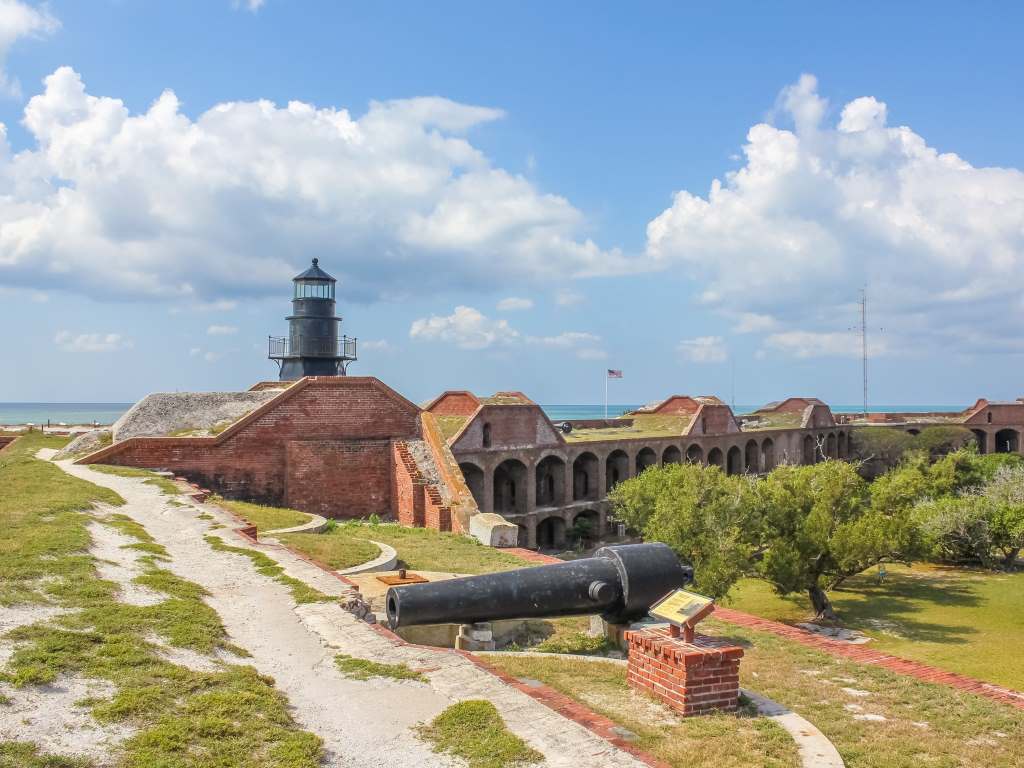
Dry Tortugas National Park
Location:70 miles Southwest of Key West (only accessible by boat or plane)
Fees and Reservations: Yes, per person walking in fee. Note that the ferry price includes your admission fee. If you arrive by another method, you’ll need to pay upon arrival.
What makes Dry Tortugas National Park unusual compared to the other Florida National Parks is the remote location that can only be accessed by boat or seaplane. Its 7 small islands cover 100 square miles surrounded by the Gulf of Mexico.
The park is home to Fort Jefferson, a mid-19th-century fort. While the fort was never finished or fully armed it has some interesting history and is well worth exploring. Of architectural interest is that the fort is the largest masonry structure in the Western Hemisphere providing lots of nooks and crannies to explore.
Things to Know about Dry Tortugas National Park
Dry Tortugas National Park is named after the Dry Tortugas islands, which are part of the park. The park was established in 1992 and is home to Fort Jefferson, which is a historic fort that was built in the 19th century.
The Dry Tortuga Islands have been an important part of shipping lanes since their discovery in 1513 by Ponce de Leon. During the 17th century, the islands were used by pirates as a home base because of the large number of ships passing through.
Today, Dry Tortugas National Park is popular for its easy access to one of the best snorkeling and diving spots in the United States. The islands sit near the end of the Florida Coral Reef which we snorkeled in Biscayne National Park. The island’s beaches are also nesting places for sea turtles.
Top 10 Things to Do in Dry Tortugas National Park
Here’s a list of 10 unique things to do in Dry Tortugas National Park:
- Explore historic Fort Jefferson, the largest masonry structure in the Western Hemisphere. Ferry tickets included a guided tour. Or you can take a self-guided tour on your own.
- Snorkel in the crystal-clear waters around Garden Key. It’s preferable to bring your own snorkeling gear even though some tours may include it.
- Garden Key is perfect for swimming and enjoying the beach.
- Visit Loggerhead Key, a secluded island 3 miles from Garden Key. You can explore the historic lighthouse and stunning beaches. You can only get to Loggerhead Key in your private boat. Some visitors bring a kayak with them on the ferry just for this trip. Make sure you get a boat permit before launching your kayak.
- Camp on the Beach in the park’s primitive campground.
- Dry Tortugas is a vital layover for migrating birds, making it a great spot for birdwatching. You’ll want your binoculars!
- Learn about the sea turtles that nest on the islands and observe nesting and hatching in season.
- Walk the land bridge to Bush Key. The land bridge between Garden Key and Bush Key only exists when shifting sands are just right. This is most common in the fall and winter. Other times, you would need to kayak the short distance between the islands. Bush Key is home to a wide variety of migratory birds.
- The islands are a popular place for saltwater fishing. You’ll notice private fishing charters enjoying the waters here. There are a handful of places where you can fish right from Garden Key. Make sure you have your gear and a license and have read the fishing regs.
- Explore the night sky where you’ll find no light pollution to darken the stars. When you camp in Dry Tortugas you’ll discover a sky full of wonder.
Tips for Visiting Dry Tortugas National Park
When visiting Dry Tortugas National Park, it’s important to know that the park is an isolated location. You must be prepared to take care of yourself during your visit. That means bringing plenty of food, water, and supplies. There are no services on the islands, although you can purchase food items and a few basic supplies on the ferry.
- Garden Keys is the only island you can access without a private boat. That’s where you’ll find the fort, the visitor center, beaches, and the campground.
- The park can only be reached by boat or seaplane. The ferry and seaplane tours fill up quickly, for example as I write this they are booked out at least a month ahead.
- In addition to food and water, don’t forget to pack sunscreen, insect repellent, and your swimsuit.
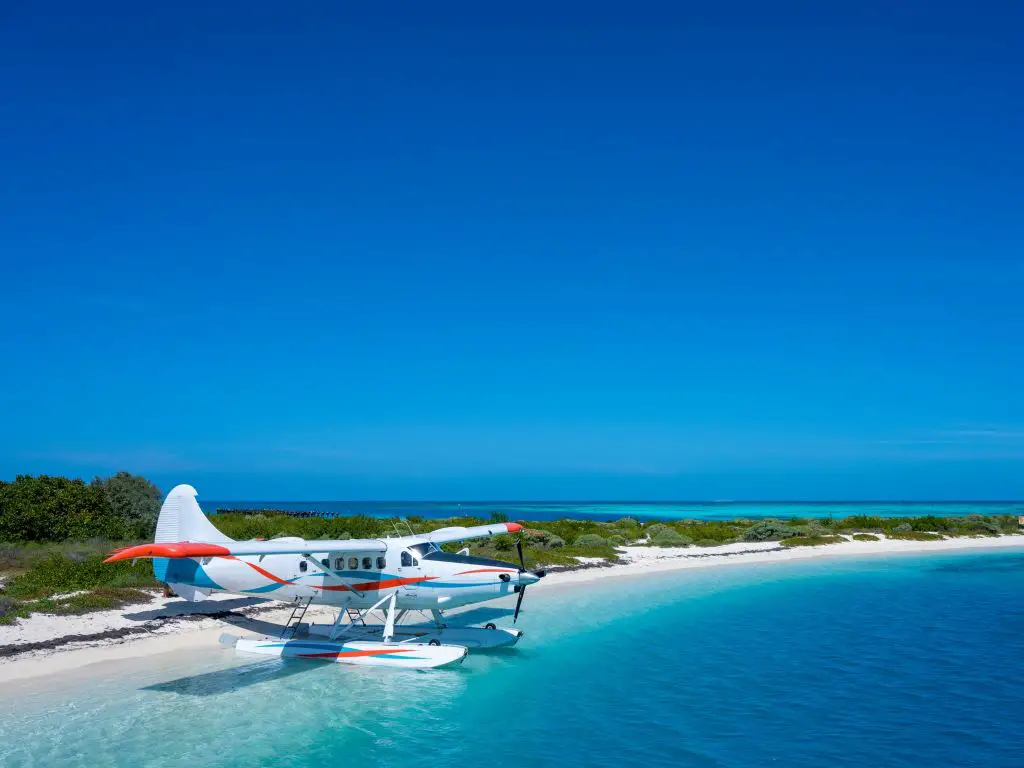
Getting to Dry Tortugas National Park
If you’re planning a visit to Dry Tortugas National Park, start planning as early as possible to ensure you can get a ticket. The Yankee Freedom ferry is the most popular way to get to Dry Tortugas National Park, leaving from Key West. You can enjoy a day trip or book an overnight camping trip to the park. The cost of the ferry varies, with prices ranging from $200 per adult for a day trip to $450 per adult for a two-night camping trip.
If you prefer a more unique experience, you can take a seaplane to Dry Tortugas National Park. Key West Seaplane Charters offers flights to the park, with prices starting at $329 per person for a round-trip flight. Seaplanes offer a faster and more scenic way to get to the park, with flights taking around 40 minutes each way.
Another option for getting to Dry Tortugas National Park is to drive your own boat or hire a charter boat. Because the park is so far offshore, weather conditions need to be calm for smaller boats to make the journey.
Camping in Dry Tortugas National Park
You can camp on Garden Keys for a true island camping experience. There are only 8 campsites with a small overflow area so camping space is limited. However, if you book your trip on the ferry to include a camping spot, you are guaranteed a space. Just be aware that space may be in the overflow area.
Once the ferry and seaplane leave for the day, the only visitors still on the island are the campers. It’s a pretty cool way to spend a night.
Hotels Near Dry Tortugas National Park
There are no hotels near Dry Tortugas National Park. However, we’d suggest you plan to stay close to the ferry docks the night before your trip. If you are running late, the ferry will not wait for you. The good news is that the ferry dock is located in the historic district of Key West which is home to a wide variety of hotels and rentals. You can check rates and availability for Key West hotels here.
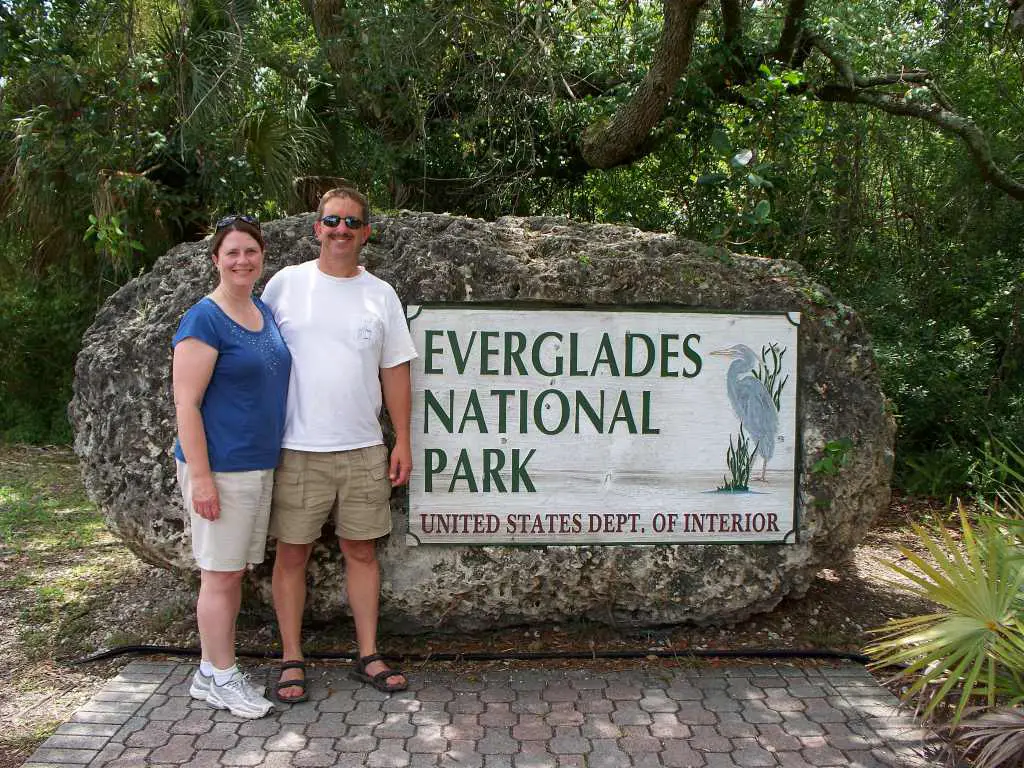
Everglades National Park
Location: Southern Florida
Fees and Reservations: Yes, an entrance fee required
Our first thought when considering a visit to Everglades National Park is of a world of swamps and alligators. While that’s true, there is so much more to discover when exploring the Everglades. During our two visits to Everglades National Park we found it to be a naturalist’s dreamland! We loved exploring this land where wildlife we don’t find back home was abundant.
Everglades National Park was established with the purpose of protecting a unique diversity of life found across 8 ecosystems. While you’ll find scenic views throughout this Florida National Park, it’s the unusual nature of the subtropical wilderness that attracts visitors.
Things to Know about Everglades National Park
Everglades National Park was established in 1934, becoming the first and only subtropical preserve in the United States. As the 3rd largest National Park in the lower 48 states, it covers over 1.5 million acres. The park is home to diverse habitats from marshes and swamps to mangroves and pine flat woods.
Everglades National Park is a unique and diverse ecosystem that is home to a wide variety of plants and animals. The park is home to endangered Florida panthers and American crocodiles. You’ll also find more common wildlife like bears, raccoons and deer here. There are over 300 species of birds that make the Everglades their home or migrate through seasonally.
Top 10 Things to Do in Everglades National Park
As the biggest park among all the Florida National Parks, this list barely begins to scrape the surface of things to do in the Everglades!
- Take a nature walk where you can get up close views of the wildlife and plants that thrive in Everglades National Park. You’ll find over a dozen short nature walks, many with educational signs to help with your exploration. On these nature walks, it’s the small events that can make a trip a memory. We were enthralled by a turtle that was laying eggs under one of the walkways.
- Stop at one of the 4 Visitor Centers where you’ll discover information about the park’s ecosystems and the creatures that make this park home.
- Canoeing or Kayaking through the Everglades is one of the best ways to see the park. You can adjust your tour based on your own comfort level. Rentals are available in the park and nearby communities if you are adventurous enough to head out on your own. Or there’s a lengthy list of authorized guides with tours for a variety of skill sets. You’ll also find a handful of ranger-led kayak tours.
- Take a 15-mile tram tour through Shark Valley where you can walk up a tower that has views 20 miles in all directions of the park.
- Join a ranger, or explore on your own on a bike trail. There are 5 bike trails in Everglades National Park, each through a different area of the park, between 3 and 16 miles long.
- Don’t forget your binoculars for bird watching. Even if you aren’t usually a bird watcher, you’ll find the immense number of active birds something to remember.
- Take a boat tour from Flamingo Marina. Brad and I really enjoyed the wildlife tour of the bay. Or you can go backcountry in a large comfy boat instead of that little tiny kayak!
- There are ample opportunities for fishing in the Everglades. 1/3 of the park is covered with salt water while most of the rest is a series of fresh water streams and rivers.
- Geocaching is a popular activity in the park, with park rangers managing the program to ensure it is a great educational opportunity.
- Take an airboat ride with an authorized guide company. (One of our favorite things to do in the Everglades)
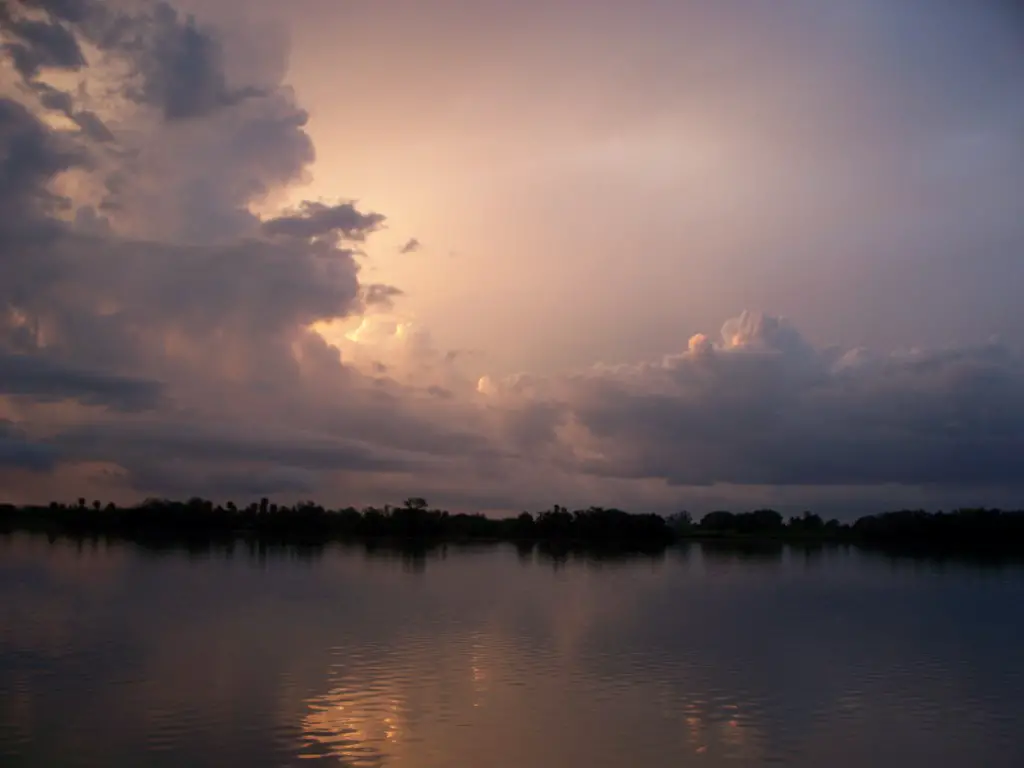
Tips for Visiting
- Be aware of the local weather forecasts as they can change quickly in this subtropical climate.
- Bringing proper sunscreen, mosquito repellent, and hats is essential for a comfortable trip. After all, you are in a swamp!
- If you are not comfortable with partaking in water activities, that’s ok. You’ll have a great adventure by exploring the visitor centers and walking a few of the interpretive trails.
- Alligators and snakes are a common sight throughout the park, so visitors should pay close attention to designated boardwalks and trails. Don’t approach wild critters, give them their space.
Getting to Everglades National Park
Where is Everglades National Park?
Everglades National Park crosses much of the Southern part of the state of Florida. On the Gulf Coast it’s a short trip from Fort Meyers, Tampa or Naples to the west entrance near Everglades City. On the Atlantic side, it sits south of Miami and Fort Lauderdale with the entrance near Homestead, Florida. The Tamiami Trail, Highway 41, crosses the state and borders the top of the park.
Camping in Everglades National Park
There are almost 400 drive-in campsites, some with electric, in the Long Pine Key and Flamingo campgrounds. Long Pine Key is close to the Homestead entrance while the Flamingo Campground is near the bay.
There are a wide variety of backcountry campsites in the Everglades. You need to reserve your sites and get your backcountry permits through recreation.gov. Most of these sites are only reachable by water which makes planning your trip a little more challenging. If this is your first trip, give the Visitor Center a call and they will help you plan.
Lodging Near
Both gateway communities of Everglades City on the West and Homestead on the East have a wide variety of lodging options. If you want to tie your Everglades adventure in with a visit to Big Cypress and Biscayne National Park I’d suggest you stay in Homestead as it is centrally located to all 3 parks. However, if you are touring the Gulf Coast, then Everglades City or Naples will make more sense.
Check availability for Everglades City Lodging here. And you can check price and availability for Homestead here.
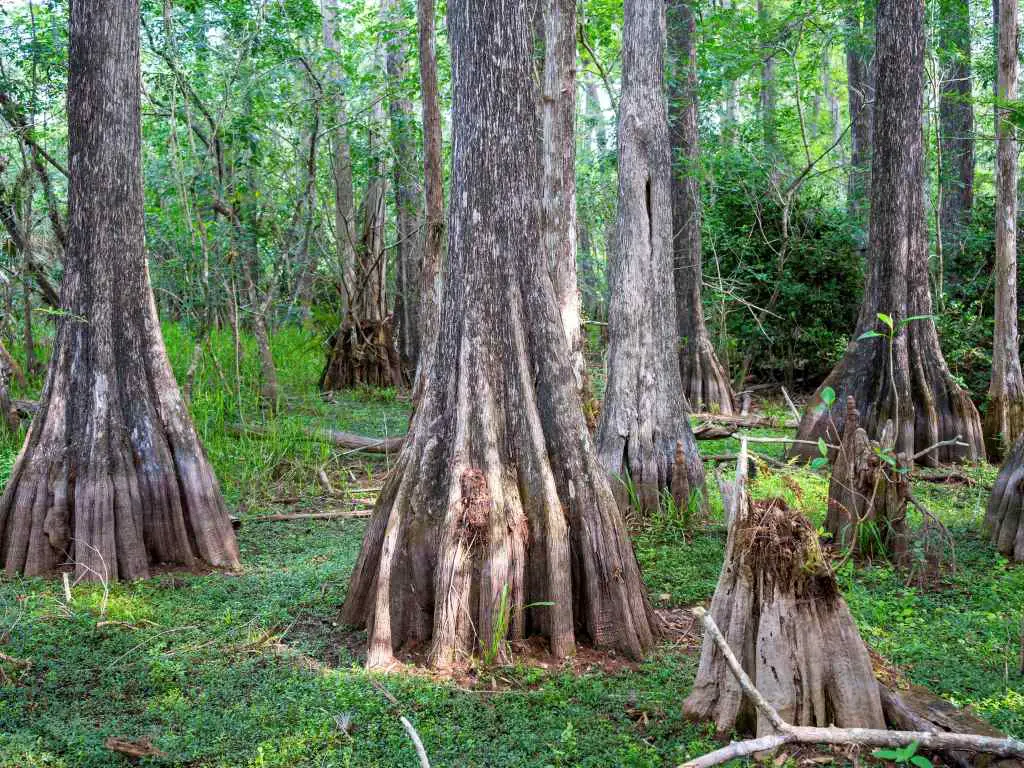
Big Cypress National Preserve
Location: Ochopee, Florida
Fees and Reservations: No Entrance Fee (although some activities require permits)
Big Cypress National Preserve is a hidden jewel among the Florida National Parks. It is a protected wilderness area, part of the Everglades in Florida, teeming with wildlife and natural wonders. The Big Cypress Swamp covers 729,000 acres. In Big Cypress, you can explore miles of hiking, biking, off-road, and canoe trails that take you through breathtaking views of 5 unique ecosystems.
My favorite part of our trip through Big Cypress was the airboat ride. I loved it so much that we took a tour on a second trip from the other side of the park. There are several authorized companies that can take you into the swamps where you are sure to see a lot of wildlife including lots of alligators and snakes.
Things to Know About Big Cypress National Preserve
Big Cypress National Preserve was established in 1974 by an act of Congress. The Park marked the first time federal land had been set aside to both preserve a unique environment and allow for continued use of existing activities. The act allows for:
- Existing recreation like swamp buggies and airboats
- Retention of private ownership of residences and primitive camps
- Traditional tribal activities by Miccosukee and Seminole Tribes
- Hunting of whitetail deer, turkey, and feral hogs.
- Cattle grazing, although no cattle are on the land currently
- Oil and gas exploration
Since then, it has become one of the biggest draws for adventurers and nature lovers alike. It is home to wild turkeys, alligators, bald eagles, and a range of other animals that have made it their habitat. With its rich history and wide range of attractions, Big Cypress National Preserve offers something for everyone.
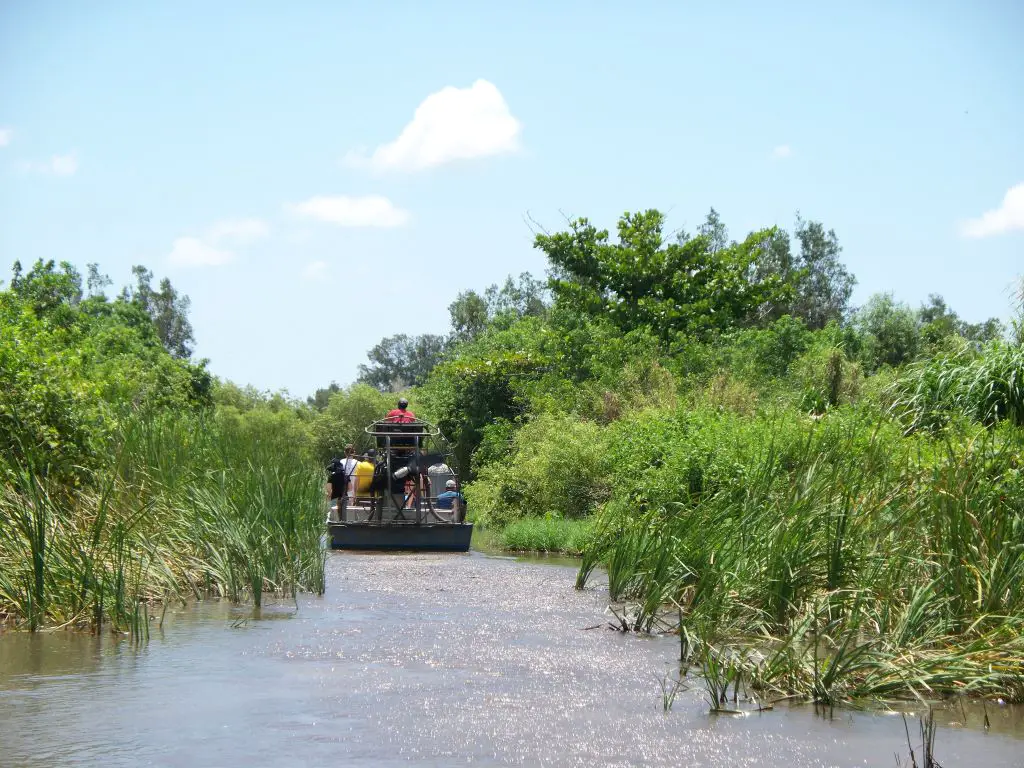
Top 10 Things to Do in Big Cypress
There’s plenty to explore in Big Cypress National Preserve! Spend a day – you’ll never get bored at this exciting destination!
- Canoeing and kayaking is an all-day adventure between the creeks and river that flow through Big Cypress and Everglades National Park jointly. If you aren’t comfortable wandering through the swamps, join a ranger-guided canoe trip.
- Bicycling on trails throughout the preserve.
- Bird-watching is great fun. You can grab a bird-watching guide in the visitor center to aid your identification.
- Hiking and swamp walks where you should be prepared to get very wet! You can book a wet walking tour with Big Cypress Institute.
- Hunting for deer, turkey and pig is open in season and with appropriate licenses.
- Off-Roading in airboats and swamp buggies on the extensive trail system. Don’t have a swamp boat? There are over a dozen authorized guides available to take you on an adventure.
- Scenic drives where you can enjoy exploring the swamp from the comfort of your regular car. Follow the Loop Road’s 27 mile tour or the 17 mile Turner River – Wagonwheel – Birdon Roads Loop Drive.
- Wildlife viewing that might surprise you. You might see manatees, alligators and other water critters. But did you expect to see a Florida Panther or a Black Bear?
- Observe the stars during a ranger-led dark sky program. Big Cypress is home to the darkest sky in the Eastern United States.
- Nathanial P. Reed Visitor Center is the place to stop to learn more about Big Cypress National Preserve.
Tips for Visiting Big Cypress National Preserve
- For off roading activities get your permits in advance and make sure your vehicle meets the safety requirements.
- Big Cypress is remote, and there are few places to refill your water so carry plenty of water as you explore.
- Cell service is very limited so be prepared to self rescue with equipment, food and first aid supplies before you head backcountry.
Getting to Big Cypress National Preserve
Where is Big Cypress National Preserve?
Big Cypress National Preserve is in Southern Florida. Everglades National Park butts up against the preserve on the Southern border. You’ll have the most access to the park and visitor centers if you enter on Tamiami Road (Hwy 41) which crosses the full width of the preserve, connecting Naples on the West and Miami on the East side of Florida.
Camping In Big Cypress National Preserve
With 8 campgrounds and 150 campsites, camping in Big Cypress is the best way to intimately explore this National Park. Reservations are strongly recommended which you can make through Recreation.org.
Backcountry camping is popular in Big Cypress. Many enjoy traveling through the park in their off road vehicles and camping deep in the park.
Lodging Near Big Cypress National Preserve
We found that Big Cypress National Preserve is an easy day trip from Miami – Fort Lauderdale on the Atlantic Ocean or from Naples – Fort Myers on the Gulf Coast. I’ve done both with ease. So as you can imagine, you have hundreds of hotel choices. But if you want to stay close look for a hotel in Everglades City or check out the Western Edge of Miami for a larger variety of choices.
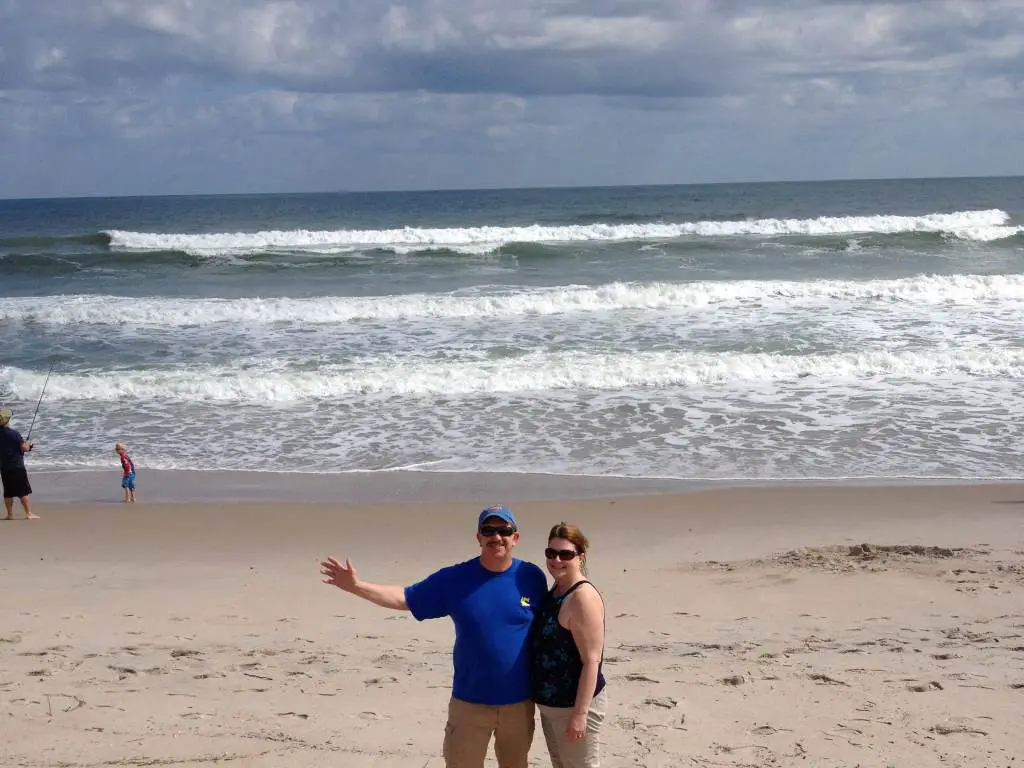
Canaveral National Seashore
Location: Titusville Florida
Fees and Reservations: $20.00 per vehicle entrance fee (or National Park Pass)
We discovered Canaveral National Seashore quite by accident! After spending a long weekend in crazy Orlando, I wanted a quiet beach day before boarding our evening flight home. That beach turned out to be part of the Canaveral National Seashore which is only 1 1/2 hours from Orlando. It is a true delight among the Florida National Parks.
Canaveral National Seashore is a beautiful park located on the east coast of Florida near the town of Titusville, and just south of Daytona Beach. The park is home to over 24 miles of pristine beaches, making it the perfect destination for swimming, sunbathing, and surfing.
Visitors can also explore the park’s diverse ecosystems, including salt marshes, mangrove swamps, and coastal dunes. The park is home to a variety of wildlife, including sea turtles, manatees, and dolphins.
Things to Know about Canaveral National Seashore
Canaveral National Seashore covers 58,000 acres. The beautiful beaches provide a safe habitat for many endangered species including nesting for thousands of turtles. Canaveral National Seashore is managed by the U.S. National Park Service and offers a unique natural experience, filled with vast stretches of shoreline, unique coastal habitats and wildlife, as well as an incredibly rich cultural history.
Mosquito Lagoon, the largest area in the park, is an important and diverse estuary in the Florida National Parks. Wildlife is abundant and many visitors enjoy a day of exploring in kayaks.
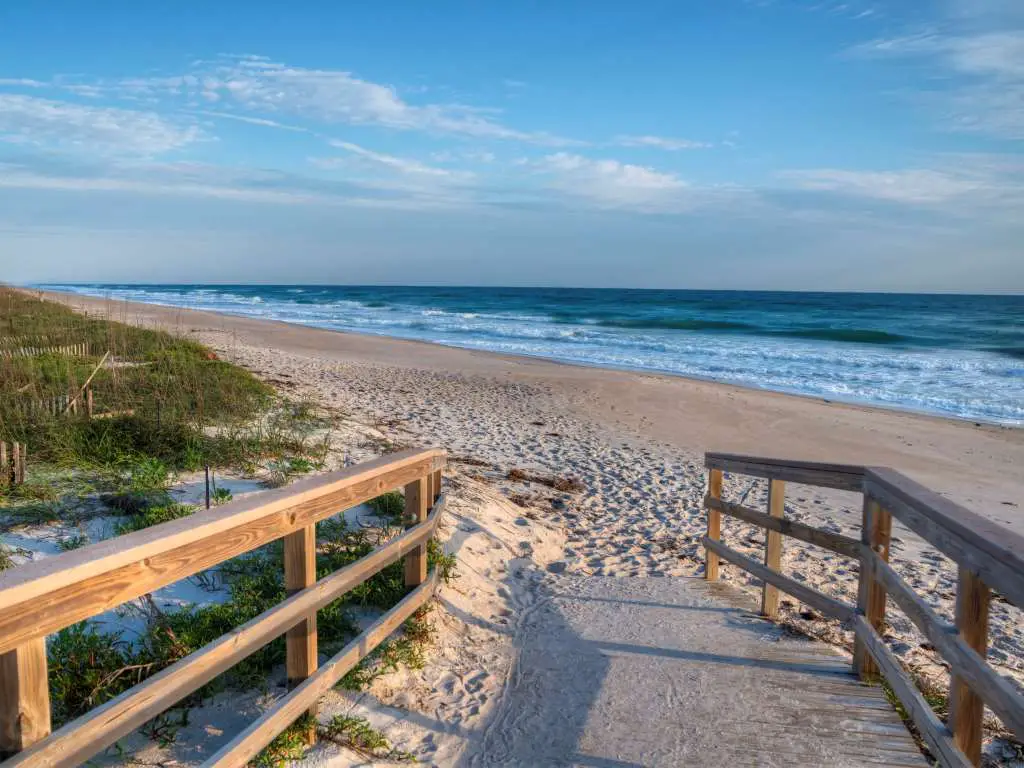
Top 10 Things to Do in Canaveral National Seashore
- Relax on the beautiful Playalinda or Apollo Beaches. You’ll find lifeguards on duty at the beginning of the beaches so enjoy a swim.
- Kayaking Mosquito Lagoon is extremely popular. The lagoon is tranquil and you’ll see a variety of wildlife. There are multiple boat launches in and near the park.
- Hike Castle Windy Trail which is located near Apollo Beach’s parking area number 3. It’s a 0.8 mile out and back hike that leads to a beautiful coastal view. Don’t forget your mosquito spray, they are voracious.
- Visit Seminole Rest Historic Site where you’ll discover the story behind the historic shell mound that dates as far back as 2,000 BCE. Here clams were harvested and smoked for later use.
- Watch a Rocket Launch from Playalinda Beach. Most scheduled rocket launches from Kennedy Space Center can be observed from the beach. You need to arrive early as traffic will be shut off close to launch or if the park gets too crowded. Although there was no launch the day of our visit, it was fun to pull out our small travel binoculars and observe the launch pads in the distance.
- Ride your horse on Apollo Beach. Outside of the sea turtle nesting season, horseback riding is allowed. Reservations are required to manage any crowding.
- For the adventurous, backcountry hike Klondike Trail. This 12 mile hike connects Playalinda and Apollo beaches. It is not an easy hike and will take all day. You will need a permit that you can purchase at the entrance station.
- Bird watching opportunities are all around at Canaveral National Seashore. There are more than 500 species of birds to observe in their natural habitat- from majestic bald eagles to colorful parrots. Raptors soar overhead while cormorants splash in the surf.
- Follow the Eldora Loop Road which takes you to an old agricultural community. The surviving building, the“State House”, has been restored to serve as a museum.
- Surf Fishing starts early in the morning as anglers hit the beach. Even if you don’t fish, we find it fun to watch fishermen as they work the shore and hunt sand fleas to use as bait.
Tips for Visiting Canaveral National Seashore
When visiting Canaveral National Seashore it is important to respect the environment and keep safety as a top priority.
- Be sure to stay on marked trails and obey any posted signs. Be especially aware of any marked sea turtle nesting sites and give them plenty of room.
- It is also recommended that you bring more water than you think you need and wear appropriate clothing, such as long-sleeved shirts, pants, hats, and sunglasses.
- Kennedy Space Center is just to the south of the Canaveral National Seashore and can easily be combined into your adventure into this part of Florida. There’s a wide variety of activities that space enthusiasts will love.
- Bring your lunch as you’ll want to enjoy the day. There are no food vendors in the park.
Getting to Canaveral National Seashore
Where is Canaveral National Seashore
Canaveral National Seashore is along the Atlantic Ocean near the town of Titusville. It’s about 1 1/2 hours northeast of Orlando and 45 minutes south of Daytona Beach. There are two entrance gates to the park, one near Playalinda Beach and the other near Apollo Beach.
Camping in Canaveral National Seashore
If you’re looking for an interesting camping adventure, then Canaveral National Seashore camping is the place to be. You’ll find 14 backcountry campsites, all only accessible by boat or kayak. Reservations must be made in advance on Recreation.gov. For some sites you can also reserve a canoe if you don’t have your own.
Lodging Near Canaveral National Seashore
The best places to stay when enjoying a day at Canaveral National Seashore are in nearby Titusville. Find Titusville hotels here.
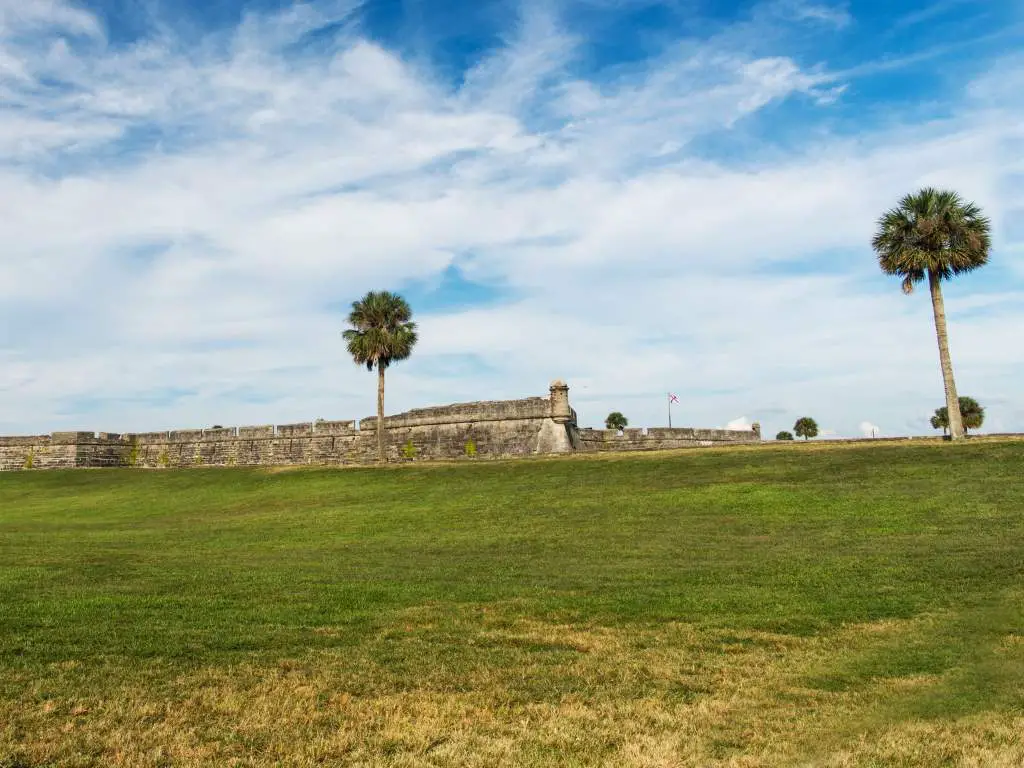
Castillo de San Marcos National Monument
Location: St Augustine Florida
Fees and Reservations: Yes, per person walking in fee. Note that a National Park Pass only covers the person named on the pass plus 3 guests. (Children 15 and under are free.)
Hours: 9am-5pm, except Christmas and Thanksgiving Day
I find exploring forts incredibly fascinating. Think about how well organized everyone had to be to survive. For a historical fort experience among the Florida National Parks check out the Castillo de San Marcos National Monument in St. Augustine, Florida. The fort was built by the Spanish to defend Florida and the Atlantic trade route. Standing for over 320 years, it is the oldest masonry fortification in the continental United States.
Things to Know About Castillo de San Marcos National Monument
A visit to Castillo de San Marcos National Monument is a step back in time.. This historic fort has stood for centuries through periods of Spanish colonization and wars in America.
The fort was constructed by the Spanish in the late 1600s, using coquina. Coquina is a unique building material composed of tiny sea shell fragments and is surprisingly durable.
The fort itself is an impressive. You’ll be surrounded by huge towering walls around an open courtyard. The walls have a distinctive star-shaped design. The interior is divided into several levels that include rooms for soldiers, storage, and even a chapel.
The Castillo de San Marcos served as a military stronghold for several different nations over the centuries. The Spanish originally used the fort to protect their interests in Florida. The British and Americans captured and occupied it during times of war.
Top 10 Things to Do at Castillo de San Marcos National Monument
- Self-Guided Tours are the easiest way to explore the monument. You’ll find detailed information for each room and weapon in the self-guided tour section on the NPS app. The app works on both IOS and Android phones.
- Talk to the Park Rangers and volunteers stationed about the park, ready to answer your questions about the fort. You can check in as you arrive to see if there are any formal presentations on the day of your visit.
- Take a unique selfie with a re-enactment staff member. Park Rangers or Volunteers are often dressed in period costumes and available to demonstrate equipment or answer questions.
- Experience a Historic Weapons Demonstration on most weekends. Park volunteers treat visitors to a demonstration of firing muskets or cannons.
- Listen to Castillo Stories as you walk through the fort. Experience the fort through the eyes of soldiers living and working in the fort. The 7 different recorded stories can be found on the NPS app.
- Don’t forget to check out the moat surrounding the fort, which was once filled with water to protect the fort from invaders.
- Explore the weapons collection, which includes muskets, swords, cannons and the original Spanish coat of arms.
- One of the most interesting exhibits is the model of the fort, which shows how the fort was constructed and how it functioned during battles.
- Experience a View of Nature around the park.
- Explore the Exhibit Room where you’ll find old artifacts.
Tips for Visiting Castillo de San Marcos National Monument
Here are a few tips for your visit to Castillo de San Marcos National Monument:
- The average visitor stays 1 to 2 hours.
- Plan ahead: There are often activities and events that take place at the fort. If you time your visit right, you’ll enjoy these extra activities.
- Wear comfortable shoes: The Castillo de San Marcos is a large stone fortress with many stairs and uneven surfaces.
- Bring sunscreen and water as the fort is primarily an outdoor park with little shade.
- Pets are not allowed inside the fort structure, although you can leash walk them in the exterior park area.
Getting to Castillo de San Marcos National Monument
Where is Castillo de San Marcos National Monument?
Castillo de San Marcos National Monument is located in downtown St. Augustine, Florida. The address is 1 S Castillo Dr., St. Augustine, FL 32084. The fort is easily accessible from I-95. It’s about an hour’s drive time from Jacksonville or Daytona Beach and two hours from Orlando.
Camping at Castillo de San Marcos National Monument
There is no camping at Castillo de San Marcos National Monument. However, there are several campgrounds in the nearby St. Augustine beach area.
Hotels Near Castillo de San Marcos National Monument
If you’re looking for a hotel near Castillo de San Marcos National Monument, there are plenty of options in the St. Augustine area. You can search for nearby hotels here. No matter where you choose to stay, be sure to book your hotel in advance, especially if you’re visiting during peak season.
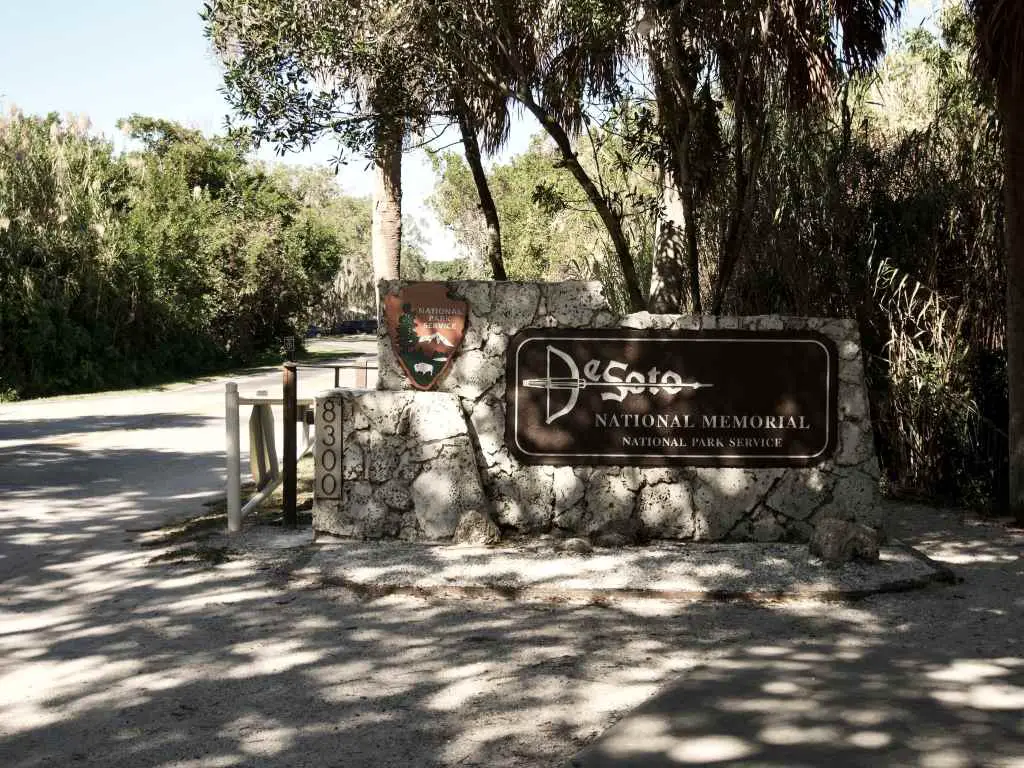
De Soto National Memorial
De Soto National Memorial is located on the mouth of the Manatee River in Bradenton. This unique Florida National Park provides a look at the early days of European exploration into Florida. It also highlights the destructive effect explorers, like de Soto, had on the Indian population in the Southeastern United States.
Hernando de Soto’s ship arrived in Tampa Bay in May 1539 with soldiers, craftsmen, and clergy. The expedition was tasked with finding gold and other riches to take back to Spain. At the De Soto National Memorial, you’ll learn about their journey and their life in the Americas.
What makes De Soto National Memorial unique is the variety of experiential activities where you can learn through hands-on activities. Here you can explore the park’s 26 acres of waterfront property, take a kayak tour, and witness reenactments of historical events.
Things to Know About De Soto National Memorial
De Soto National Memorial is one of Florida’s National Parks and is located in Bradenton, Florida. Established as a National Memorial in 1948, the park features a replica of De Soto’s landing site and a monument to the Native Americans who were impacted by the expedition.
The park is also home to a variety of wildlife, including alligators, manatees, and many species of birds.
Top 10 Things to Do at De Soto National Memorial
If you’re planning a visit to De Soto National Memorial, you’re in for a great day! Here are the top 10 things to do during your visit:
- Witness de Soto’s Ships Landing reenactment which happens every April. Check the park’s calendar for the updated day and time.
- Visit Camp Uzita where volunteers recreate the 16th century life of the explorers in their camp. This unique experience is only available Thursday through Sunday from January to mid-April.
- Take a Nature Hike along the shoreline. You’ll find interpretive signs along the way.
- Visit the Exhibits to learn about the history and culture of the Native American tribes that once inhabited the area.
- Take a Guided Kayak Tour with a park ranger around the bay. Tours run June through October and must be reserved in advance. De Soto National Memorial staff provides all the equipment you’ll need.
- Bird watching during the annual spring and fall bird migration is rewarding. The visitor center can share what birds are currently passing through the area.
- Relax on one of the small beaches along the shoreline. You are also welcome to swim although there are no lifeguards on duty.
- Picnic in the Park and enjoy a scenic lunch or snack.
- Browse through the gift shop and book store which is inside the visitor’s center.
- Walk the Memorial Trail including a stop at the Tabby House Ruins.
Tips for Visiting De Soto National Memorial
Here are a few tips to help you make the most of your visit:
- Don’t forget your sunscreen and insect repellent. The mosquitoes are fierce.
- The park is open every day from sunrise to sunset. However, the visitor center and parking lot is only open 9am to 5pm. So make sure you aren’t still in the parking lot after 5pm or your car may be towed.
- Check the schedule before you go for ranger-led programs, including guided tours, talks, and demonstrations. Some require advance reservations. The NPS app seems to have the most accurate calendar of events.
- De Soto National Memorial is home to a variety of wildlife, Some are dangerous including alligators, snakes, and birds of prey so be cautious and give them their space.
- Pets are allowed on the grounds of the De Soto National Memorial as long as they are leashed and you clean up after!
Getting to De Soto National Memorial
Where is De Soto National Memorial?
De Soto National Memorial is located in Bradenton, Florida at 8300 De Soto Memorial Hwy. It’s less than an hour’s drive from the Tampa Airport or the Sarasota-Bradenton Airport. It’s situated on the mouth of the Manatee River and offers stunning views of Tampa Bay.
You may also arrive by bicycle or small boat. You’ll find most of the park bike friendly. Boats can tether in a protected cove near the monument, although there are no boat ramps in the park.
Camping in De Soto National Memorial
Unfortunately, camping is not allowed within this Florida National Park. However, there are several campgrounds nearby where you can stay during your visit. Some of the popular options include:
Be sure to book your campsite in advance as they can fill up quickly, especially from December through April.
Hotels Near De Soto National Memorial
Many visitors to the de Soto National Memorial choose to stay on the nearby Bradenton Beach and Santa Anna Island, where you can enjoy beachfront resorts. It’s only a 15-20 minute drive away. You can check rates and availability of hotels on Bradenton Beach here. If you are a little more cost-conscious, you’ll find a wide variety of hotels throughout Bradenton.
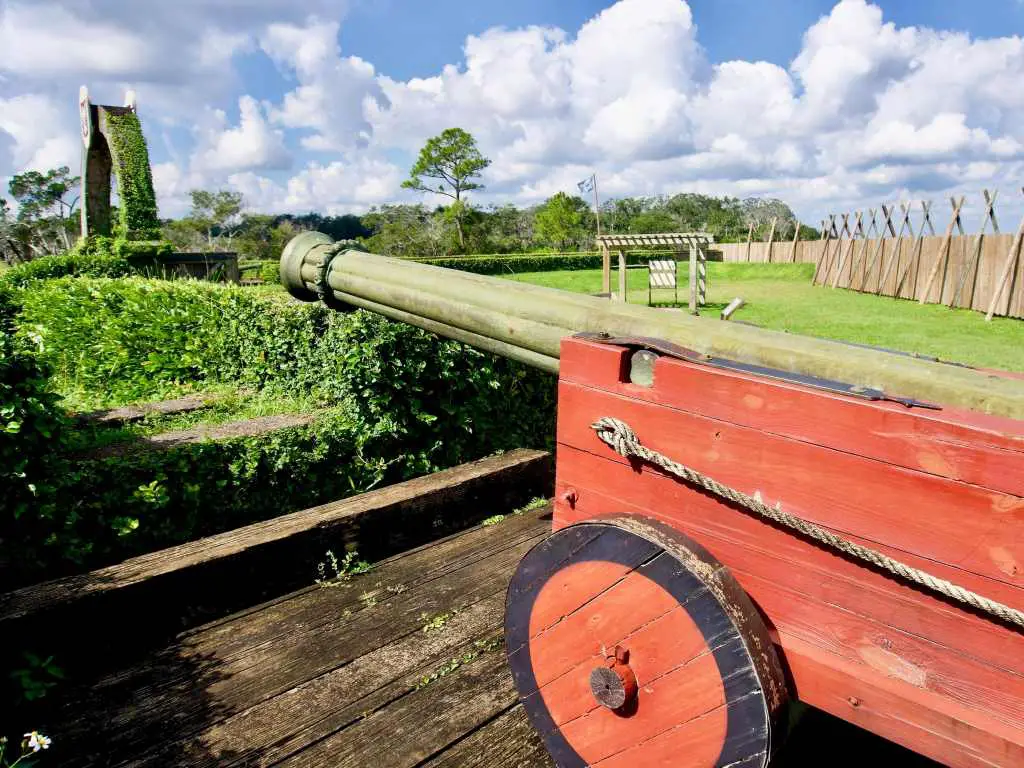
Fort Caroline National Memorial
Location: 13 miles East of Downtown Jacksonville, Florida
Fees and Reservations: None
Hours: Wednesday – Sunday 9am – 5pm
While many of Florida’s National Park sites commemorate events and places where Spain made a claim to the Americas, Fort Caroline National Memorial is in memory of France’s attempt to stake a claim.
Fort Caroline is a Unit of the Timucuan Ecological and Historical Preserve which you can read more about below. The visitor center for the preserve is in the Fort Caroline Park. Pop on down to the Timucuan Preserve details for more information about the park and things to do while you are here.
Things to Know About Fort Caroline National Memorial
In the 16th century, France was anxious to explore the Americas and return with gold and riches like their Spanish neighbors. After several difficult attempts, they started building a fort named La Caroline (land of Charles) in honor of King Charles IX. It didn’t take long for Spain to discover the French were trying to establish themselves in Florida. The response was a massacre at the fort that killed most of the French contingency.
Things to Do at Fort Caroline National Memorial
- The Fort Caroline National Memorial visitor center is home to displays that help visitors learn about the site’s history. The exhibits feature artifacts related to the fort’s occupation, including weapons, pottery, and other items used by those that lived there.
- Watch a short film that detailing the history of Fort Caroline and its importance in early American history.
Discover more things to do while visiting Fort Caroline National Memorial in the section below covering the Timucuan Preserve. This gorgeous Florida National Park has plenty to explore!
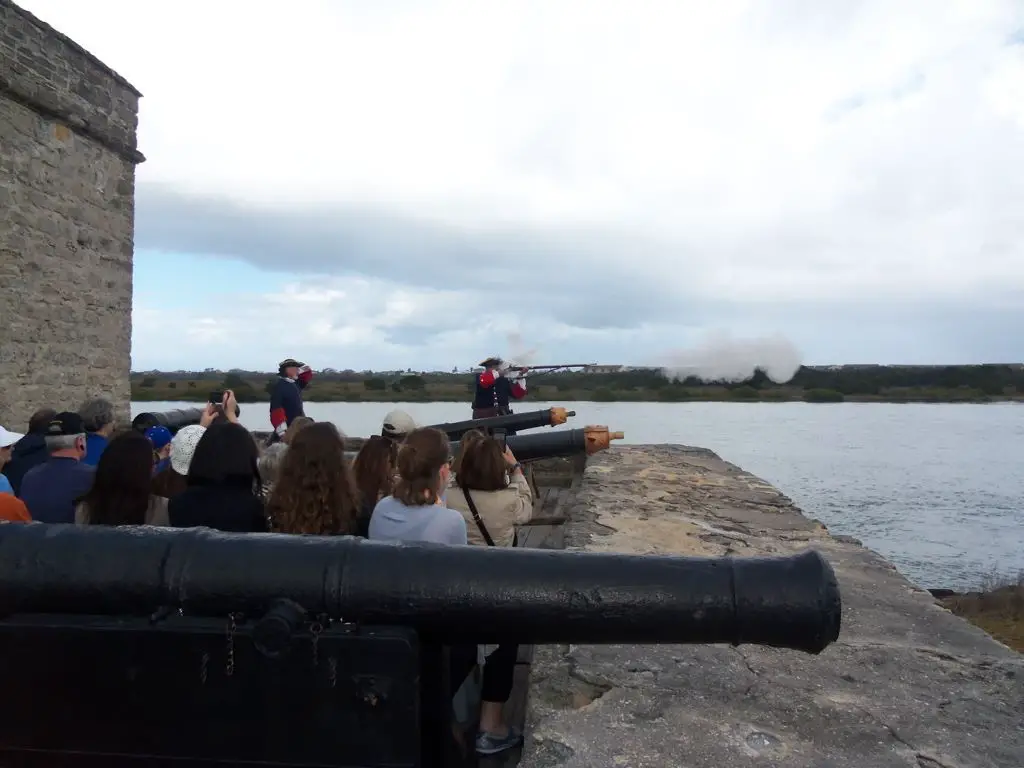
Fort Matanzas National Monument
Location: St. Augustine, Florida
Fees and Reservations: None, Ferry Tickets to Fort are Free, First Come First Serve
Hours: Ferry to Fort 9am-5pm Wednesday through Sunday Visitor Center 9am-5pm everyday
Fort Matanzas National Monument is one of the Florida National Parks that document the Spanish attempts to keep control of the St. Augustine area in the eighteenth century. Completed in 1742, the fort preserves the coquina watchtower which was built to defend the Southern approach to St. Augustine.
Today the monument also protects about 300 acres of Florida’s coast. The ecosystem includes dunes, marshes and forests that are home to wildlife and plants that include many endangered species.
Things to Know about Fort Matanzas
Fort Matanzas National Monument was established in 1924. It is the site of the fort that was built by the Spanish to protect their colonial interests from attacks by England and France. The name “Matanzas” is a Spanish word meaning “slaughter,” and refers to the massacre of French soldiers that occurred near the site in 1565.
Exploring the Fort Matanzas National Monument requires taking a boat ride to the fort itself. The ferry departs from the visitor center across the Matanzas Inlet to Rattlesnake Island where Fort Matanzas is located. Once you arrive at the fort, a ranger will meet you and give a tour of the Fort. The whole tour takes about 45 minutes, including the ferry trip. Unlike some of the large forts among the Florida National Parks, Fort Matanzas is smaller and primarily comprised of the large watchtower.
The park grounds cover an ecologically interesting barrier island which you can explore on your own. Near the visitor center follow the .6 mile nature trail to view a variety of plants and wildlife native to this ecosystem. In a small area you will find many different eco systems common to Florida which attract a wide variety of birds.
Top 10 Things to Do at Fort Matanzas
- Stop at the visitor’s center where you’ll find exhibits and interactive displays that showcase the area’s colonial past. You will also have the chance to watch a short introductory film about the memorial.
- Take the ferry to Rattlesnake Island to tour the Fort. See the notes below about getting tickets.
- Walk the 1/2 mile nature that wind through marshes and forests. Check out the trail guide for insights into the unique nature along the way.
- Enjoy a picnic lunch under an old oak canopy. You’ll be amazed by the size of the oaks in the picnic area.
- Relax on the beach. The Fort Matanzas National Monument park has a beautiful beach where you can swim and recharge in the sun. There is not food or drinks, so bring your cooler.
- There are a plethora of places to fish in the park, from the river to the ocean and the intercoastal waterway, you just might catch your dinner! Make sure you have your license and are current on the fishing rules.
- Enjoy a re-enactment event. Even better, sign up to be a volunteer at one of these events. Events are scheduled throughout the year so check the park calendar to see if something is happening when you are visiting.
- Do a little shopping in the Gift Shop and pick up some books on the history of the Spanish explorations throughout Florida. You’ll discover the network of forts that the National Parks in Florida preserve.
- Bird Watching is a great way to start your morning when visiting Fort Matanzas National Monument. The estuary and water fronts bring a large number of birds to roost, including many migratory species.
- Visit the Dunes Overlook display where you can learn about the wildlife that makes those dunes along the beaches their home.
Tips for Visiting
The monument is located on Rattlesnake Island and can be accessed by a free ferry ride from the visitor center. The ferry runs Wednesday through Sunday, except holidays. Admission is free but tickets are required for the ferry ride and can be obtained at the visitor center on a first-come-first-served basis.
During peak season the tickets can go fast so it’s suggested that you arrive early. Then be prepared to enjoy a short hike or some beach time before your tour time in case you need to wait.
Leashed pets are allowed in the park area around the visitor’s center and on the Coastal Hammock Trail. They are not allowed on the ferry, in the fort area or on beaches.
Getting to Fort Matanzas National Monument
Where is Fort Matanzas National Monument?
Fort Matanzas National Monument is south of St. Augustine on the Atlantic Ocean of Florida. The Visitor’s Center address is: 8635 A1A South, St. Augustine, FL 32080. Although it’s easy to get to the park by car, you might enjoy the bike path/sidewalk that extends all the way from St. Augustine Beach to Fort Matanzas.
Camping in Fort Matanzas National Monument
There are no campgrounds within Fort Matanzas National Monument. However, there are many campgrounds near the ocean North of the park. You’ll also find nearby camping at several of Florida’s state parks including: Faver Dykes State Park and the Matanzas State Forest.
Lodging Near Fort Matanzas National Monument
I’d suggest you look in St. Augustine Beach for hotels and rentals. That puts you close to the park and near beautiful beaches. There’s also a great bike trail from that area to the National Monument. You can check availability of St Augustine Beach hotels here.
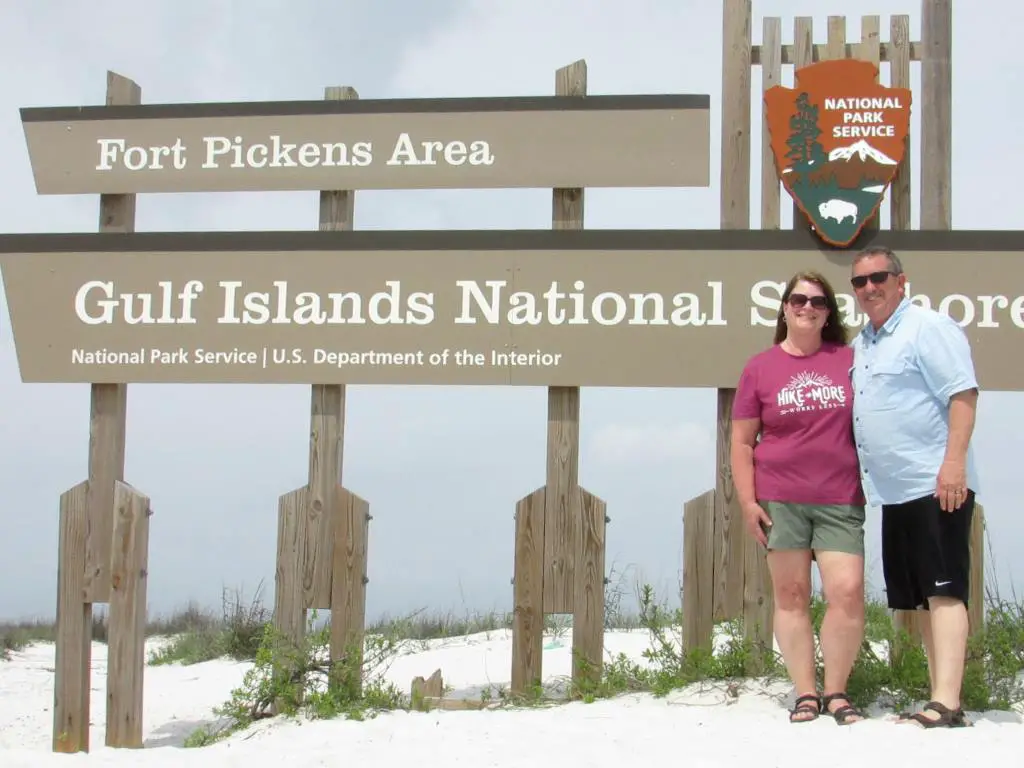
Gulf Islands National Seashore
Location: Florida Section is near Pensacola Florida, Mississippi Section is near Biloxi
Fees and Reservations: Entrance Fee or National Park Pass required
Hours: 5am – 8pm Mar-Oct, 5am – 6pm Nov-Feb and most beaches 8am – sunset
I’ve been to the Florida section of the Gulf Islands National Seashore 5 times and Brad has made more visits than he can count. We keep coming back because, in my opinion, these are the most beautiful beaches in the United States. Plus we have really good friends living in the area. What makes a better vacation than that? We’ve camped, rented a vacation home and stayed with friends on various trips. It’s the perfect place for us to get away from winter cold!
Located along the Gulf of Mexico in northwest Florida and Mississippi, the Gulf Islands National Seashore includes more than 160 miles of beautiful coastline. The National Seashore encompasses barrier islands that offer white sand beaches, lush marshes, historic forts and a variety of endangered wildlife species. It is one of our favorites of the 11 Florida National Parks.
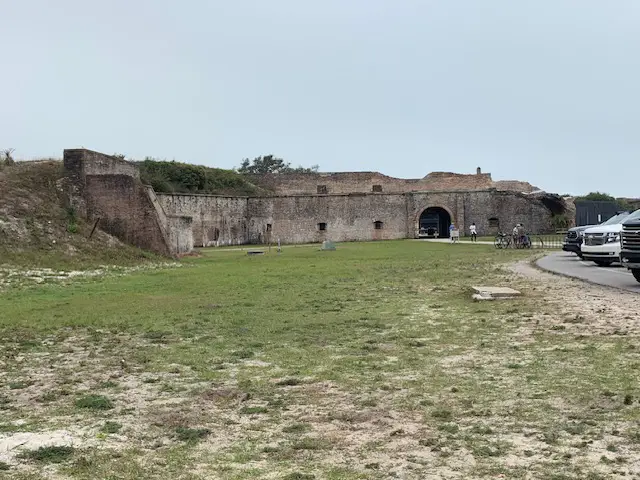
Things to Know About the Gulf Islands National Seashore
Within Florida, there are 6 unique areas of the Gulf Islands National Seashore to Explore.
- Perdido Key Area – Best known for Johnson Beach which is an amazing place to spend the day beach combing, relaxing or watching the Blue Angels practice overhead. Note this beach is so popular that it will close when full so get there early or go on weekdays.
- Fort Pickens Area – You can explore the 1800s and Civil War era fort here as well as batteries throughout the grounds. Langdon Beach is perfect for swimming and fishing.
- Santa Rosa Area – Is where you’ll find 7 miles of beaches on both the gulf and bay side of Santa Rosa Island. The popular Opal Beach Complex has picnic areas, showers and bathrooms for day use.
- Okaloosa Area – This is a smaller day use beach area of the Gulf Islands and the farthest East on the Choctawhatchee Bay.
- Naval Live Oaks Area – The most heavily wooded area in the Gulf Islands, is a perfect place for a hike. The Naval Live Oaks Area is near the pennisula of Gulf Breeze in the Pensacola Bay.
- Fort Barrancas Area – This area is home to 2 forts including the civil war area Fort Barrancas which sits high on a bluff overlooking Pensacola Bay. You’ll also find here Advanced Redoubt which sits just north of Fort Barrancas and was built to protect Fort Barrancas from a land attack. This area sits on the Pensacola Navel Station and is currently closed to visitors.
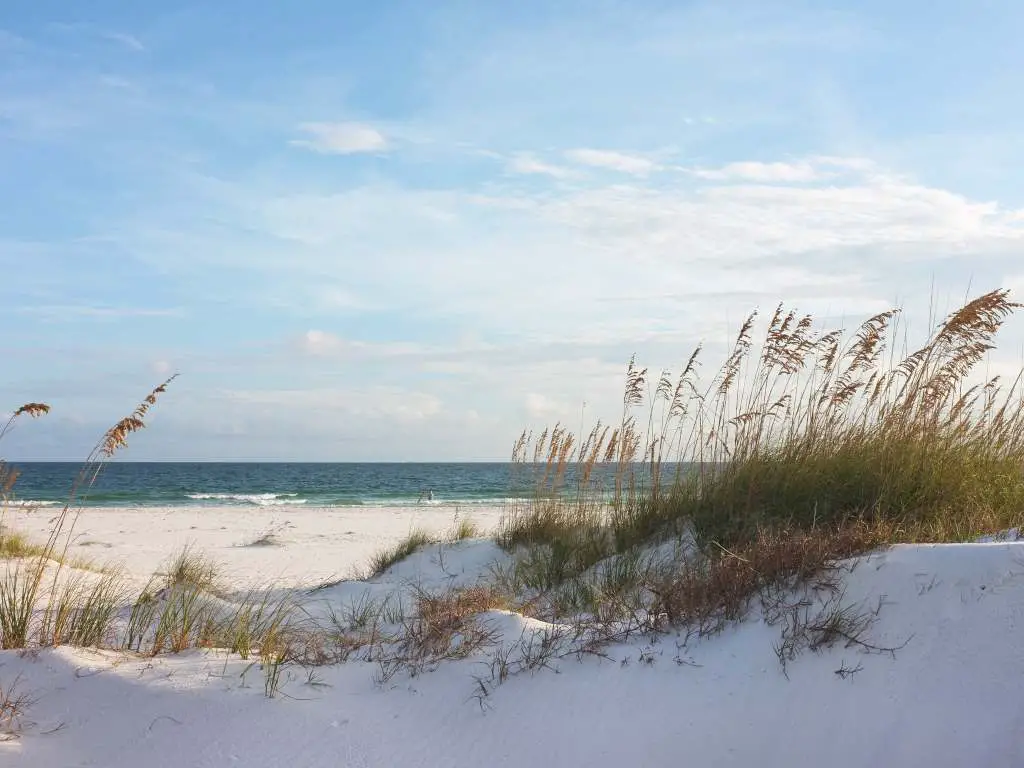
Top 10 Things to Do in the Florida Section of the National Seashore
Since we are talking about the National Parks in Florida here, I’m going to focus on things to do in the Florida Section.
- Enjoy the softest, whitest beaches found in Florida! Within the Florida section of Gulf Shores there are 4 beautiful beach areas.
- Explore Fort Pickens, a Civil War Era fort built to protect Pensacola Bay. Self guided tours are available at the fort.
- Climb up the batteries used to protect the bay. Cannons once lived in these armories and today you can climb up to see for miles. There are several open for exploration.
- Hike through the Naval Live Oaks Area on the 7 mile nature trail.
- Kayak, canoe or paddleboard from the Okaloosa Area Boat Launch. The waters are calmer here making for a perfect day to float.
- Shop in the Fort Pickens Gift Shop where you’ll find an extensive selection of books on the history of this area.
- The Fort Pickens Discovery Center has hands on displays and movies to aid in your exploration of the Gulf Shores.
- Host a family event at one of the picnic pavilions. You’ll find several large and comfortable pavilions throughout the Gulf Shores.
- Hike sections of the Florida National Scenic Trail which crosses much of Florida. The 1500 mile trail begins at Fort Pickens and ends in Big Cypress. Brad, Charlie and I walked the first few miles that connect the Fort Pickens Campground to the the Fort. If you are up for a long hike, continue on the trail the length of Santa Rosa Island.
- Fishing is a very popular activity on the beaches of the Gulf Shores National Seashore. Although we didn’t try fishing from shore, it was a lot of fun watching the busy fisherman.
- Bonus: Take the ferry from Fort Pickens to Pensacola Beach to Downtown Pensacola. The ferry service is managed by a private concessionaire, so check their site to ensure you have the most current schedule.
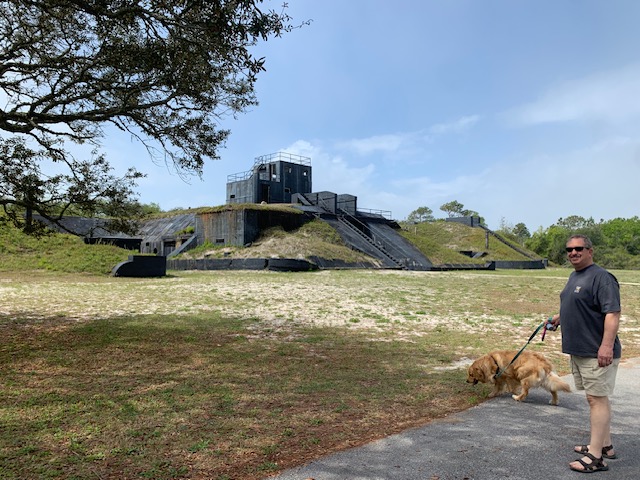
Tips for Visiting Gulf Islands National Seashore
- Come prepared to spend at least a full day, we prefer to stay 3-5 days ourselves! Bring food and beverages, although it’s easy to pick up supplies nearby.
- The beaches are beautiful, soft sand and perfect for a relaxing day. However, you are pretty far from the warm waters of Southern Florida so you may not want to swim long until true summer arrives.
- Weekends will be crowded so consider a weekday stop.
- Dogs are allowed on most hiking trails. They are not allowed on beaches within the Gulf Islands National Seashore. However, just outside Fort Pickens the city of Pensacola Beach has a dog park beach that we love. It’s just a mile outside the park so same level of joy.
Getting to Guld Islands National Seashore
Where is Gulf Islands National Seashore?
The Gulf Islands National Seashore follow the Gulf Coast near Pensacola Florida and Biloxi Mississippi. Most of the Seashore consists of barrier islands that can be reached by driving over long bridges. In some cases you can also take a ferry to the islands.
Camping in Gulf Islands National Seashore
In the Florida Section of the Gulf Islands National Seashore, you can enjoy camping in Fort Pickens Campground. We’ve happily camped in both loop A and loop C in this spacious campground. If you are camping in the heat of the summer, try for loop A which has more shade from massive old growth live oaks. Only a sand dune separates you from the Gulf on one side and Pensacola Bay on the other so you can fall asleep to the sound of waves each night. Unlike most National Park campgrounds, Fort Pickens has electricity at campsites and really nice bathrooms with showers. We were told this campground is one of the ten busiest National Park campgrounds so book as early as you can.
You can also backcounty camp on Perdido Key if you have a way to boat in to the remote beaches. Check out the rules regarding camping on the beach to ensure you are in the right area.
Lodging Near Gulf Islands National Seashore
For the Florida section of the Gulf Islands National Seashore, nothing is easier than a stay in Pensacola Beach. We keep going back to this beautiful place because of the most amazing beaches and the access to great restaurants. Best of all… it’s only minutes away from the solitude of the National Seashore. You can check for some great Pensacola Beach vacation Rentals Here. We enjoyed staying in a small condo in Navarre Beach one year. It was a longer drive to get to restaurants and our friends, but we were happy to be away from spring breakers.
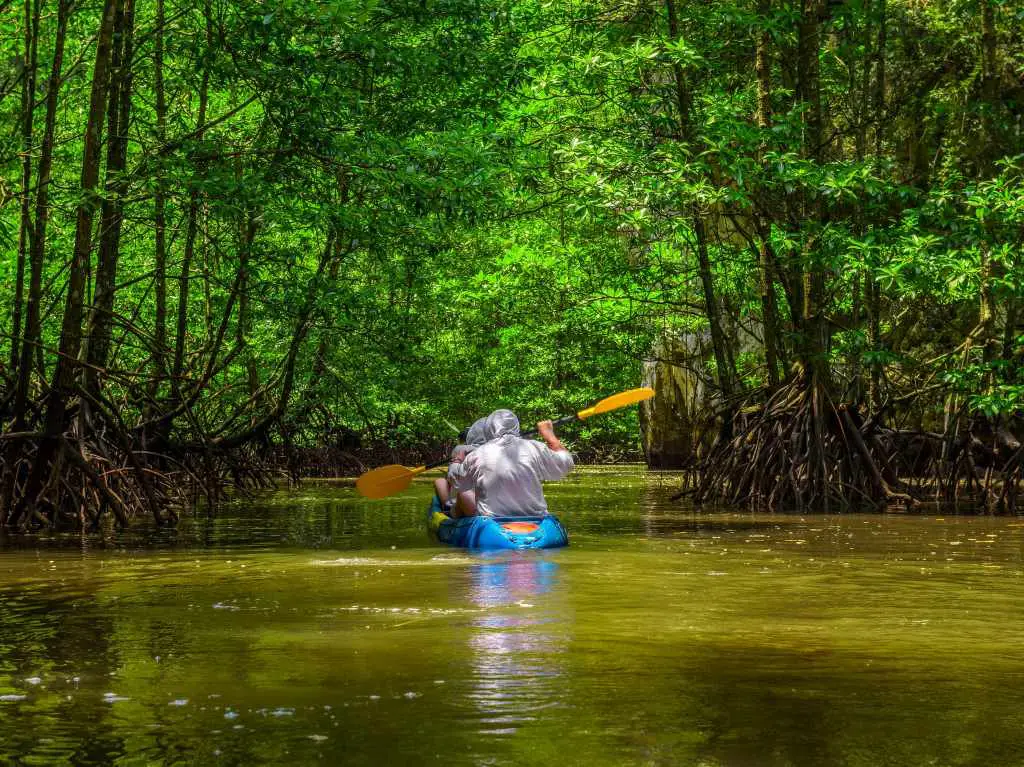
Timucuan Ecological and Historical Preserve
Location: Northeast of Jacksonville Florida
Fees and Reservations: No fees
The Timucuan Ecological and Historical Preserve has many faces, a fact that make it a great stop when you are visiting the National Parks of Florida.
The park covers 46,000 acres Northeast of Jacksonville Florida. There are several unique “parks” within the Preserve that will provide a variety of historical and ecological experiences. It would take several days to fully enjoy all the preserve has to offer. You’ll also find several Florida State Parks within this area.
Things to Know About the Timucuan Preserve
The Theodore Roosevelt area, with over 600 acres, and the Cedar Point area, covering 400 acres, are dedicated to preserving wildlife and the ecology of the coastal wetlands on the Atlantic Coast. The Preserve also serves as documentation of the complex, and often unflattering, history of Florida through exhibits at individual Parks: Fort Caroline, American Beach and Kingsley Plantation.
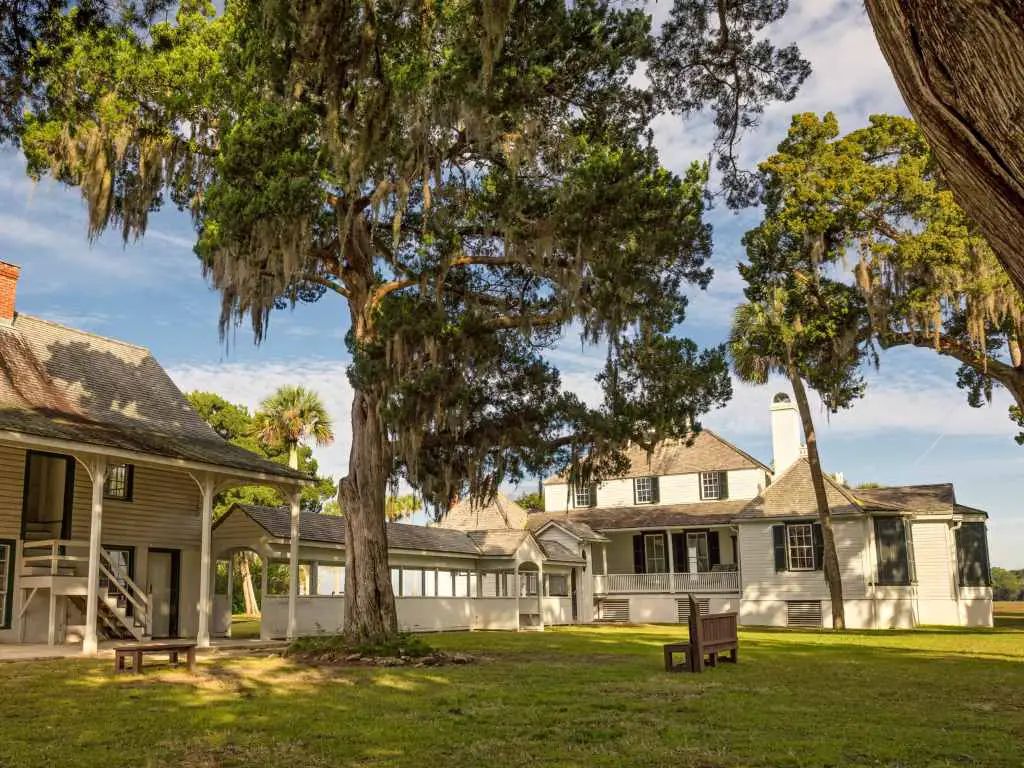
Top 10 Things to Do in Timucuan Ecological and Historical Preserve
- Learn about the Timucuan Indians who first populated much of Florida before Europeans arrived. Thought to have numbered over 200,000 people in the 16th century, these people were extinct by 1800.
- Tour a replica of Fort Caroline, built by the French in 1564 and now a National Memorial.
- Explore Kingsley Plantation, where free and enslaved African Americans lived and worked during the 19th century.
- One of the best ways to explore the park is to take a hike through the Theodore Roosevelt Area. This section of the preserve contains gorgeous mangrove swamps and coastal strands, separated by estuarine creeks and golden marshlands.
- The best way to explore is via Canoe or kayak through the Florida Sea Islands Paddling Trails. If you don’t have a kayak, they can be rented nearby at Kayak Amelia.
- Hiking is a great way to explore the preserve, you can travel along beach trails or through shady hammocks.
- Visit historic American Beach where a segregated, black only, beach thrived from 1935 to 1964.
- Birding from the observation platform in the Theodore Roosevelt Area is a popular spot to see a wide variety of birds. Check the park calendar for guided bird watching hikes throughout the preserve.
- Drive the Saturiwa Trail, a scenic loop road on Fort George Island. You can find an audio tour here.
- Kayak with Dolphins. During the summer when the water is calm, kayakers often discover dolphins in the St. Johns River. Of course, keep your distance and have your waterproof camera handy!
Tips for Visiting the Timucuan Preserve
- The Timucuan Preserve is a large, sprawling urban park. Before you go, make sure you check for directions to the specific area you want to visit. Most searches will only take you to the Visitor Center where you’ll also find Fort Caroline.
- Don’t forget bug repellent as biting insects and ticks are prevalent.
- Pets are allowed in public areas, including hiking trails, as long as they are well behaved and on a 6 foot leash.
- While the whole National Park is open 7 days a week during daylight hours, the Visitor’s Center and other buildings are only open Wednesday through Sunday from 9am – 4:30pm.
Getting to Timucuan Ecological and Historical Preserve
Where is the Preserve?
Situated Northeast of Jacksonville Florida along the Atlantic Ocean Coast, the preserve covers a lot of area. You’ll want to determine which part of the park you want to explore before heading out as directions will vary greatly. If you want to start at the visitor’s center to get your bearings the address is: 12713 Fort Caroline Road, Jacksonville, Florida 32225
Camping in the Preserve
While there are no National Park campgrounds, there are two campgrounds within the boundaries of the Timucuan Preserve.
Little Talbot Island State Park is on an undeveloped barrier island which provides a really cool camping experience. The campground has 36 sites that can handle RVs up to 30 feet.
Huguenot Memorial Park is a Jacksonville City Park with 60 electric campsites. Many sites are right on the edge of the beach!
Lodging Near Timucuan Ecological and Historical Preserve
Pretty much any lodging on the East side of Jacksonville will put your close to all that the Preserve has to offer. The bonus is you are close to the beach too! You can check hotels and availability in Jacksonville here.
A Few More Thoughts About Florida National Parks
As you can see, Florida National Parks have something to offer for everyone’s interest. You can spend a day on the most beautiful beach. Or enjoy an afternoon exploring 400 year old history. Or discover fish, birds and other wildlife closer than you ever imagined. Don’t forget to include this look unique look at Florida in your next vacation plan.
